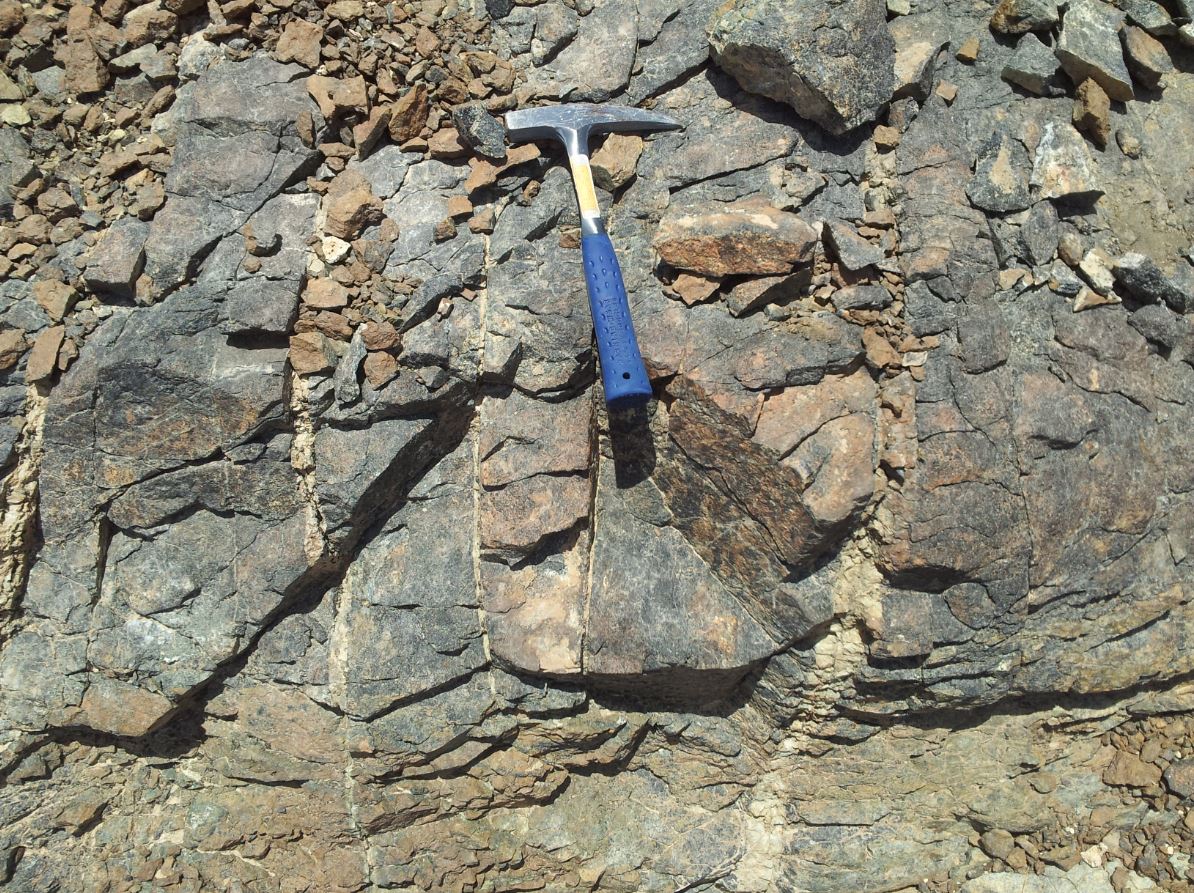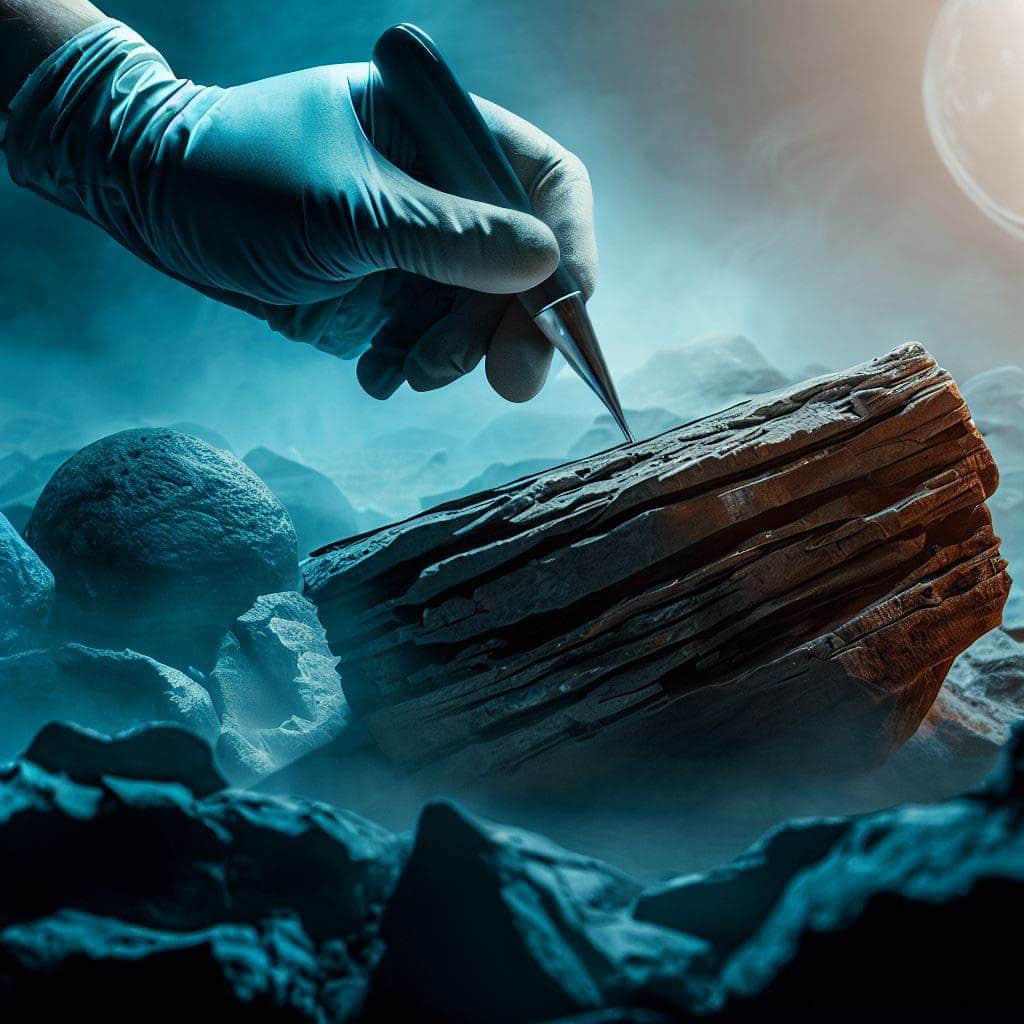Ultrabasic rocks are a group of igneous rocks that are composed of more than 90% mafic minerals such as olivine and pyroxene. These rocks are known for their high magnesium and iron content and are formed from the mantle of the Earth. Ultrabasic rocks are typically found in areas of tectonic activity such as mid-ocean ridges, subduction zones, and continental rifts.
One of the most interesting aspects of ultrabasic rocks is their mineral composition. These rocks are rich in minerals that are not commonly found in other types of rocks, including some that have industrial and economic significance. For example, ultrabasic rocks can contain chromite, which is used in the production of stainless steel, and platinum group elements such as platinum, palladium, and rhodium, which are used in the automotive and electronics industries. Understanding the mineral composition of ultrabasic rocks is therefore important not only for geological research but also for economic purposes.
Overview of Ultrabasic Rocks
To understand the properties of ultrabasic rocks, it is important to examine their characteristics, types, and locations. Characteristics of these rocks include high levels of magnesium and low levels of silica, resulting in an extremely basic pH level. Types of ultrabasic rocks include serpentinite, peridotite, and dunite, each with its own unique mineral composition. Locations, where ultrabasic rocks are found, include ophiolites, subduction zones, and mantle plumes.

Minerals Contained in Ultrabasic Rocks
Ultrabasic rocks are known for containing a diverse range of minerals, including olivine, pyroxene, amphibole, and serpentine. These common minerals are typically found in large quantities within ultrabasic rocks, making up a significant portion of their composition. In addition to these common minerals, ultrabasic rocks also have the potential to contain a variety of rare minerals, such as chromite, platinum, and diamonds, which can be valuable resources for mining and industrial applications. Despite this potential for rare minerals, the overall abundance of minerals in ultrabasic rocks can vary widely depending on the specific geological conditions that formed them.
Common Minerals Found in Ultrabasic Rocks
Moving on to the minerals contained in ultrabasic rocks, it is important to note that these rocks are rich in mafic minerals, which are those that are rich in iron and magnesium. The most common minerals found in ultrabasic rocks include olivine, pyroxene, and amphibole. Olivine is a green mineral that is typically found in igneous and metamorphic rocks, while pyroxene and amphibole are dark-colored minerals that are commonly found in igneous rocks.

Olivine is particularly abundant in ultrabasic rocks and is often the dominant mineral. It forms large, rounded grains that are easily visible to the naked eye. Pyroxene and amphibole are also commonly found in ultrabasic rocks, although they are usually present in smaller quantities than olivine. Pyroxene is a group of dark-colored minerals that includes augite, diopside, and enstatite. Amphibole is another group of dark-colored minerals that includes hornblende and actinolite.
In addition to these common minerals, ultrabasic rocks may contain smaller amounts of other minerals, including plagioclase feldspar, chromite, and magnetite. Plagioclase feldspar is a light-colored mineral that is commonly found in igneous rocks, while chromite and magnetite are dark-colored minerals that are rich in chromium and iron, respectively. These minerals may not be as abundant as olivine, pyroxene, and amphibole, but they are still important components of ultrabasic rocks.
Rare Minerals Found in Ultrabasic Rocks
As we delve deeper into the composition of ultrabasic rocks, we come across an array of rare minerals that are found in these rocks. These minerals are not commonly found in other types of rocks and are particularly interesting to geologists and mineralogists.
One example of a rare mineral found in ultrabasic rocks is chromite. This mineral is chromium oxide and is often used in the production of stainless steel. It is found in high concentrations in certain ultrabasic rocks, such as dunite and peridotite. Another rare mineral found in ultrabasic rocks is phlogopite, which is a type of mica. This mineral is often found in kimberlite, a type of ultrabasic rock that is associated with diamonds.
Other rare minerals found in ultrabasic rocks include apatite, talc, and sulfides such as pyrrhotite and pentlandite. These minerals are often found in small quantities and are not economically viable for extraction. However, their presence in ultrabasic rocks offers valuable insights into the geological processes that formed these rocks.
The abundance of Minerals in Ultrabasic Rocks
Transitioning from the overview of ultrabasic rocks to the minerals contained within them, it is important to understand the abundance of minerals found in these rocks. Ultrabasic rocks are known for their low silica content and high levels of magnesium and iron, leading to a unique mineral composition. The abundance of minerals in ultrabasic rocks can vary widely and is dependent on factors such as the rock’s location, age, and formation process.
Common minerals found in ultrabasic rocks include olivine and pyroxene. These minerals make up the bulk of ultrabasic rocks and can be found in varying amounts depending on the specific rock type. For example, dunite is a type of ultrabasic rock composed almost entirely of olivine, while peridotite contains a mixture of olivine and pyroxene. Plagioclase is typically found in small amounts in ultrabasic rocks but can be more abundant in certain types such as troctolite.
Rare minerals can also be present in ultrabasic rocks, although their abundance is typically much lower than that of the common minerals. Examples of rare minerals found in ultrabasic rocks include chromite, magnetite, and ilmenite. These minerals are often associated with ultramafic rocks, which are a subgroup of ultrabasic rocks with even lower silica content. While rare minerals can be economically valuable, their low abundance in ultrabasic rocks makes them difficult to extract on a large scale.
Characteristics of Ultrabasic Rocks
From the previous section, we learned that Ultrabasic Rocks are igneous rocks with a very low silica content, typically less than 45%. These rocks are primarily composed of mafic minerals such as olivine and pyroxene and are known for their high density and dark color. In this section, we will delve deeper into the characteristics of Ultrabasic Rocks.
One defining characteristic of Ultrabasic Rocks is their high density, which can range from 2.8 to 3.3 g/cm³. This is due to the abundance of heavy minerals such as olivine and pyroxene, which have a higher density than most other minerals found in the Earth’s crust. Another important characteristic of Ultrabasic Rocks is their low viscosity, which means they have a tendency to flow more easily than other types of igneous rocks. This low viscosity is a result of their low silica content, which makes them less viscous and more fluid.
Ultrabasic Rocks also have a distinct mineral composition, which sets them apart from other types of igneous rocks. As mentioned earlier, these rocks are primarily composed of mafic minerals such as olivine and pyroxene, which give them a dark color. Additionally, Ultrabasic Rocks typically contain small amounts of other minerals such as chromite and magnetite, which are often concentrated in distinct layers or bands within the rock. These bands can be used to identify the type of Ultrabasic Rock and provide insight into its formation history.
Importance of Minerals in Ultrabasic Rocks
To fully understand the importance of minerals found in ultrabasic rocks, it is necessary to have a grasp of various subtopics. Essential nutrients for humans, such as iron and magnesium, are often found in these rocks and play a crucial role in maintaining our health. Understanding Earth’s geological history is also fundamental in comprehending the formation and properties of these rocks. Additionally, the industrial processes involved in extracting and utilizing these minerals have significant economic implications.
Understanding Earth’s Geological History

Understanding Earth’s Geological History is a crucial part of studying the minerals contained in ultrabasic rocks. Ultrabasic rocks are one of the oldest rock types on Earth, and they have been studied extensively to understand the Earth’s geological history. The study of ultrabasic rocks has allowed geologists and scientists to gain insights into the formation and evolution of the Earth’s crust and mantle.
The minerals contained in ultrabasic rocks provide crucial information about the chemical and physical conditions that existed during the Earth’s early history. The identification and analysis of these minerals have helped geologists to reconstruct the conditions that existed when the rocks were formed. For example, the discovery of chromite in ultrabasic rocks has provided evidence for the presence of oxygen in the Earth’s atmosphere over 2.4 billion years ago. This discovery has helped to confirm the hypothesis that the Earth’s atmosphere was oxygenated during the Great Oxygenation Event.
Additionally, the study of ultrabasic rocks has helped scientists to understand the composition and properties of the Earth’s mantle. The Earth’s mantle is a layer beneath the Earth’s crust, and it is composed mostly of ultrabasic rocks. The study of ultrabasic rocks has provided insights into the temperature, pressure, and composition of the Earth’s mantle. This information has helped scientists to develop models of the Earth’s mantle and its dynamics, which can be used to study plate tectonics and other geological processes.
Industrial Processes
Furthermore, the minerals contained in ultrabasic rocks have significant industrial importance. One such mineral is chromite, which is used in the production of stainless steel. Ultrabasic rocks are one of the primary sources of chromite, and the majority of the world’s chromite reserves are found in these rocks. Nickel is another mineral found in ultrabasic rocks, and it is commonly used in the production of stainless steel, batteries, and various industrial alloys.
In addition to the production of steel and alloys, ultrabasic rocks are also used in the production of refractory materials. Refractory materials are those that can withstand high temperatures without degrading or melting. Ultrabasic rocks, with their high melting points and resistance to chemical attack, are ideal for use in refractory materials. They are used in the production of furnace linings for steel and glass manufacturing, as well as in the lining of kilns and other high-temperature industrial processes.
Furthermore, ultrabasic rocks have been found to contain platinum group metals, which include platinum, palladium, rhodium, ruthenium, and iridium. These metals are widely used in the production of catalytic converters for automobiles, as well as in other industrial processes such as petroleum refining and the production of electronic components. The mining and processing of these metals from ultrabasic rocks have become an important industry in many countries around the world due to their high economic value.
In conclusion, ultrabasic rocks are igneous rocks that are rich in iron and magnesium and contain little to no silica. These rocks are typically found in high-temperature environments such as the Earth’s mantle and are known for their unique mineral compositions.
The minerals contained in ultrabasic rocks play a crucial role in various industries and scientific fields. Some of the common minerals found in ultrabasic rocks include olivine, pyroxene, and serpentine. These minerals are used in the production of tools, construction materials, and even cosmetics. Additionally, studying the minerals found in ultrabasic rocks provides valuable insights into the geologic processes that shape our planet.
Overall, understanding the minerals contained in ultrabasic rocks is essential for both industrial and scientific purposes. As research continues to uncover more information about these unique rocks, it is likely that their importance will only continue to grow in the coming years.



